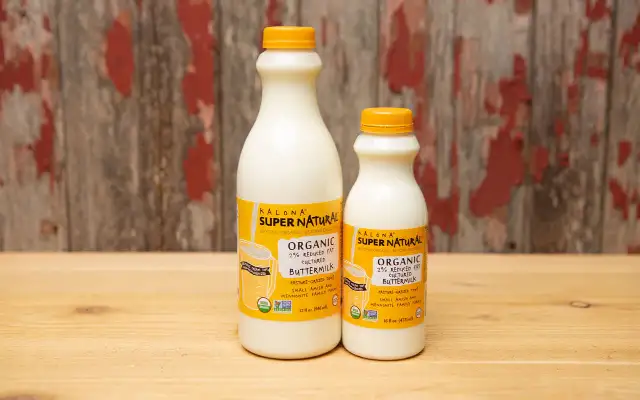Reduced fat milk is generally almost neutral. So it will have little impact on your overall acid load. But if you are fastidious, you see one type of 2% milk is better than others.
Before you use this PRAL Reduced Fat Milk List, you must understand and agree to PRAL Food Lists Principles
Acid-Alkaline Reduced Fat Milk List
I list milk with the lowest PRAL index first. Because these have the lowest acid load. So the most alkalizing dairy foods show first. But you can click the food table headings to change sort order.
| Main food description | Energy (kcal per 100 g) | PRAL ( 100 g ) | PRAL ( 100 calories ) |
|---|---|---|---|
| Milk, NFS | 51 | 0.18 | 0.35 |
| Milk, reduced fat (2%) | 50 | 0.24 | 0.48 |
| Milk, acidophilus, reduced fat (2%) | 50 | 0.24 | 0.48 |
| Milk, lactose free, reduced fat (2%) | 50 | 0.24 | 0.48 |
| Buttermilk, reduced fat (2%) | 56 | -0.93 | -1.66 |
| Milk, evaporated, reduced fat (2%) | 92 | -0.51 | -0.55 |

For the reduced fat milk category, the average PRAL values are -0.09 per 100 grams and -0.07 per 100 calories. To put this in context, compare with other dairy foods in the Food Category List.
Your Alkaline Reduced Fat Milk
Remember, factors such as growing conditions, variety, and preparation methods affect all food nutrients. USDA database values are an average of many samples. So your PRAL values for 2% milk will vary from day to day. But they are always an estimate of actual acid load on your kidneys. Which I explain more in the notes about PRAL principles on the category list page.
Leave Acid-Alkaline Reduced Fat Milk PRAL List to browse the Complete PRAL Food Category List.
Reduced Fat Milk Related Topics
Please remember: to find more related pages that are relevant to you, use the search box near the top of every page.
Common Terms: milk



